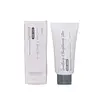What's inside
What's inside
 Key Ingredients
Key Ingredients

 Benefits
Benefits

 Concerns
Concerns

 Ingredients Side-by-side
Ingredients Side-by-side

Water
Skin ConditioningPropanediol
SolventNiacinamide
SmoothingCaprylyl Methicone
Skin ConditioningBifida Ferment Lysate
Skin ConditioningErythritol
HumectantGlycerin
HumectantCaprylic/Capric Triglyceride
MaskingTranexamic Acid
AstringentPanthenol
Skin ConditioningHydroxyethylpiperazine Ethane Sulfonic Acid
BufferingGlutathione
Limnanthes Alba Seed Oil
Skin ConditioningCentella Asiatica Extract
CleansingIsononyl Isononanoate
EmollientButylene Glycol
HumectantCetearyl Olivate
Ceramide NP
Skin ConditioningAmmonium Acryloyldimethyltaurate/Beheneth-25 Methacrylate Crosspolymer
Emulsion StabilisingDimethicone/Vinyl Dimethicone Crosspolymer
Skin ConditioningPotassium Cetyl Phosphate
EmulsifyingPentylene Glycol
Skin ConditioningHydroxyacetophenone
AntioxidantAcrylates/C10-30 Alkyl Acrylate Crosspolymer
Emulsion StabilisingSorbitan Olivate
EmulsifyingTromethamine
BufferingCeramide Ns
Skin ConditioningSodium Hyaluronate
HumectantInositol
HumectantCeramide AP
Skin ConditioningCeramide As
Skin ConditioningAesculus Chinensis Extract
AstringentCeramide EOP
Skin ConditioningPolymethylsilsesquioxane
Caprylyl Glycol
EmollientPEG/PPG-17/6 Copolymer
SolventNonapeptide-1
Skin ConditioningPhytosteryl/Octyldodecyl Lauroyl Glutamate
Skin ConditioningCyclodextrin
AbsorbentDimethicone
EmollientBis-PEG/PPG-20/5 PEG/PPG-20/5 Dimethicone
EmulsifyingMethoxy PEG/PPG-25/4 Dimethicone
EmulsifyingAdenosine
Skin ConditioningCholesterol
EmollientPhytosphingosine
Skin ConditioningHydrogenated Lecithin
EmulsifyingEthylhexylglycerin
Skin Conditioning1,2-Hexanediol
Skin ConditioningTocopherol
AntioxidantPhenylethyl Resorcinol
AntioxidantStearic Acid
CleansingCetearyl Alcohol
EmollientTocopheryl Acetate
AntioxidantSilica
AbrasiveDisodium EDTA
Xanthan Gum
EmulsifyingWater, Propanediol, Niacinamide, Caprylyl Methicone, Bifida Ferment Lysate, Erythritol, Glycerin, Caprylic/Capric Triglyceride, Tranexamic Acid, Panthenol, Hydroxyethylpiperazine Ethane Sulfonic Acid, Glutathione, Limnanthes Alba Seed Oil, Centella Asiatica Extract, Isononyl Isononanoate, Butylene Glycol, Cetearyl Olivate, Ceramide NP, Ammonium Acryloyldimethyltaurate/Beheneth-25 Methacrylate Crosspolymer, Dimethicone/Vinyl Dimethicone Crosspolymer, Potassium Cetyl Phosphate, Pentylene Glycol, Hydroxyacetophenone, Acrylates/C10-30 Alkyl Acrylate Crosspolymer, Sorbitan Olivate, Tromethamine, Ceramide Ns, Sodium Hyaluronate, Inositol, Ceramide AP, Ceramide As, Aesculus Chinensis Extract, Ceramide EOP, Polymethylsilsesquioxane, Caprylyl Glycol, PEG/PPG-17/6 Copolymer, Nonapeptide-1, Phytosteryl/Octyldodecyl Lauroyl Glutamate, Cyclodextrin, Dimethicone, Bis-PEG/PPG-20/5 PEG/PPG-20/5 Dimethicone, Methoxy PEG/PPG-25/4 Dimethicone, Adenosine, Cholesterol, Phytosphingosine, Hydrogenated Lecithin, Ethylhexylglycerin, 1,2-Hexanediol, Tocopherol, Phenylethyl Resorcinol, Stearic Acid, Cetearyl Alcohol, Tocopheryl Acetate, Silica, Disodium EDTA, Xanthan Gum
Glycolic Acid
BufferingStearic Acid
CleansingGlyceryl Stearate
EmollientDimethicone
EmollientCetyl Alcohol
EmollientPropylene Glycol
HumectantGlycerin
HumectantCyclopentasiloxane
EmollientOctyldodecanol
EmollientSodium Polyacryloyldimethyl Taurate
Emulsion StabilisingPhenoxyethanol
PreservativeHydrogenated Polydecene
EmollientTriethanolamine
BufferingRibes Nigrum Seed Oil
EmollientDisodium EDTA
Helianthus Annuus Seed Oil Unsaponifiables
EmollientTrideceth-10
CleansingCardiospermum Halicacabum Flower/Leaf/Vine Extract
Skin ConditioningHelianthus Annuus Seed Oil
EmollientTocopherol
AntioxidantRosmarinus Officinalis Leaf Extract
AntimicrobialGlycolic Acid, Stearic Acid, Glyceryl Stearate, Dimethicone, Cetyl Alcohol, Propylene Glycol, Glycerin, Cyclopentasiloxane, Octyldodecanol, Sodium Polyacryloyldimethyl Taurate, Phenoxyethanol, Hydrogenated Polydecene, Triethanolamine, Ribes Nigrum Seed Oil, Disodium EDTA, Helianthus Annuus Seed Oil Unsaponifiables, Trideceth-10, Cardiospermum Halicacabum Flower/Leaf/Vine Extract, Helianthus Annuus Seed Oil, Tocopherol, Rosmarinus Officinalis Leaf Extract
Ingredients Explained
These ingredients are found in both products.
Ingredients higher up in an ingredient list are typically present in a larger amount.
Dimethicone is a type of synthetic silicone created from natural materials such as quartz.
What it does:
Dimethicone comes in different viscosities:
Depending on the viscosity, dimethicone has different properties.
Ingredients lists don't always show which type is used, so we recommend reaching out to the brand if you have questions about the viscosity.
This ingredient is unlikely to cause irritation because it does not get absorbed into skin. However, people with silicone allergies should be careful about using this ingredient.
Note: Dimethicone may contribute to pilling. This is because it is not oil or water soluble, so pilling may occur when layered with products. When mixed with heavy oils in a formula, the outcome is also quite greasy.
Learn more about DimethiconeDisodium EDTA plays a role in making products more stable by aiding other preservatives.
It is a chelating agent, meaning it neutralizes metal ions that may be found in a product.
Disodium EDTA is a salt of edetic acid and is found to be safe in cosmetic ingredients.
Learn more about Disodium EDTAGlycerin is already naturally found in your skin. It helps moisturize and protect your skin.
A study from 2016 found glycerin to be more effective as a humectant than AHAs and hyaluronic acid.
As a humectant, it helps the skin stay hydrated by pulling moisture to your skin. The low molecular weight of glycerin allows it to pull moisture into the deeper layers of your skin.
Hydrated skin improves your skin barrier; Your skin barrier helps protect against irritants and bacteria.
Glycerin has also been found to have antimicrobial and antiviral properties. Due to these properties, glycerin is often used in wound and burn treatments.
In cosmetics, glycerin is usually derived from plants such as soybean or palm. However, it can also be sourced from animals, such as tallow or animal fat.
This ingredient is organic, colorless, odorless, and non-toxic.
Glycerin is the name for this ingredient in American English. British English uses Glycerol/Glycerine.
Learn more about GlycerinStearic Acid is a fatty acid. It is an emollient, emulsifier, and texture enhancer.
As an emollient, stearic acid helps soften skin. It aids the skin's protective barrier by preventing water loss. It also provides a gentle cleansing effect without stripping away natural oils.
Stearic acid may also be used to enhance the texture of products. It can add volume and stabilize ingredients such as water and oil. This can help water and oil ingredients from separating.
Sources of stearic acid include animal or vegetable fats/oils such as coconut or shea. It can be naturally found in butter, cocoa butter, shea butter, vegetable fats, and animal tallow.
This ingredient may not be Malassezia folliculitis, or fungal-acne safe.
Learn more about Stearic AcidTocopherol (also known as Vitamin E) is a common antioxidant used to help protect the skin from free-radicals and strengthen the skin barrier. It's also fat soluble - this means our skin is great at absorbing it.
Vitamin E also helps keep your natural skin lipids healthy. Your lipid skin barrier naturally consists of lipids, ceramides, and fatty acids. Vitamin E offers extra protection for your skin’s lipid barrier, keeping your skin healthy and nourished.
Another benefit is a bit of UV protection. Vitamin E helps reduce the damage caused by UVB rays. (It should not replace your sunscreen). Combining it with Vitamin C can decrease sunburned cells and hyperpigmentation after UV exposure.
You might have noticed Vitamin E + C often paired together. This is because it is great at stabilizing Vitamin C. Using the two together helps increase the effectiveness of both ingredients.
There are often claims that Vitamin E can reduce/prevent scarring, but these claims haven't been confirmed by scientific research.
Learn more about Tocopherol